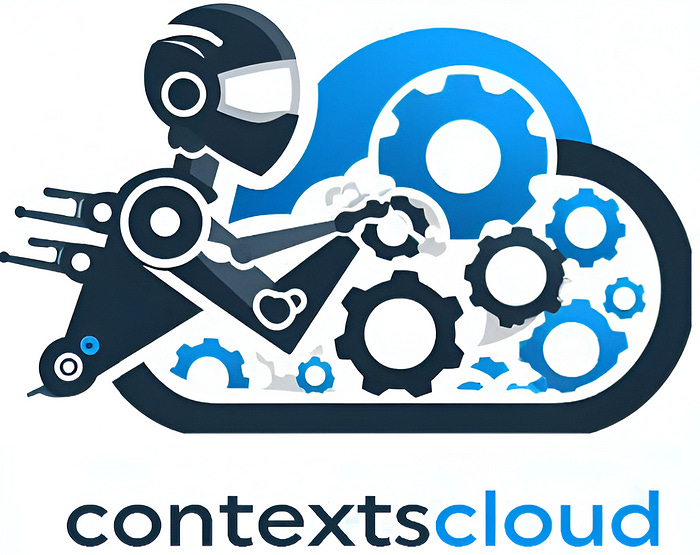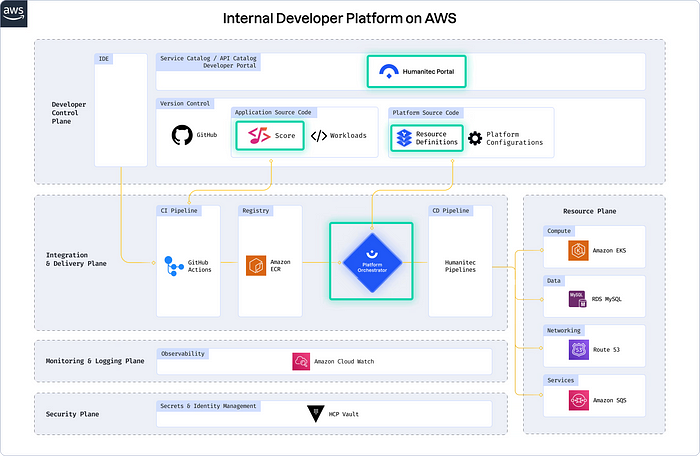Agentic Robotic Context Automation (ARCA): How AI Agents Are Revolutionizing Context Management
From Passive Automation to Self-Configuring, Self-Orchestrating Enterprise Workflows — And Why This Matters for the Future of Digital Operations
A Paradigm Shift from Automation to Autonomy
Artificial intelligence is no longer just a handy sidekick quietly following human commands. Increasingly, it’s taking on a proactive role, organizing and executing multi-step tasks with minimal human guidance. At the forefront of this evolution stands Agentic AI — AI systems capable of handling intricate workflows autonomously to achieve high-level objectives.
In parallel, Robotic Context Automation (RCA) has already shown tremendous promise in simplifying how businesses manage and automate the flow of context among applications and workflows. But combining RCA with next-generation agentic capabilities sets the stage for an even bigger leap forward.
Enter Agentic Robotic Contexts Automation (ARCA) — the next evolutionary step in context-based process automation, where self-adapting AI agents collaborate with the RCA platform to automatically onboard new customers, orchestrate infrastructure, and continuously reconfigure applications “on the fly” in response to changing business needs.
Below, I’ll explore this emerging ARCA paradigm, how it builds on proven approaches from Robotic Context Automation, and why it’s poised to transform enterprise integration, DevOps, and beyond.
Agentic AI: The Dawn of Autonomous Systems
Until recently, AI systems were often “passive,” narrowly focused on tasks like classification or predictive analytics. Now, thanks to breakthroughs in large language models (LLMs) and advanced orchestration frameworks, we have AI agents — proactive digital workers capable of:
Goal-Oriented Autonomy: They take broad objectives and figure out the steps to accomplish them.
Tool Utilization: They can dynamically incorporate relevant tools, APIs, and data sources.
Minimal Human Oversight: They learn as they go, adapt to changes, and refine their approach.
Major tech companies — OpenAI, Microsoft, Salesforce, Google — are racing to build and deploy AI agents that function as fully autonomous “co-workers.” Successful implementations already show significant productivity gains, from faster customer support resolutions to streamlined enterprise workflows.
But as these agents interact with more complex business environments, the need for structured, real-time context sharing among applications and systems becomes critical. That’s where Robotic Context Automation steps in.
Robotic Context Automation (RCA): The Foundation of Context Management
Robotic Context Automation (RCA) addresses a fundamental challenge in business IT: fragmented systems, siloed data, and the arduous process of connecting everything together.
Platforms like ContextsCloud™ tackle this problem by offering:
Contextuator™: A core context management platform designed to unify context data across applications, orchestrating everything at the edge.
Contextors™: These are the RCA “bots” that seamlessly automate context-related tasks — pulling necessary information from one application and feeding it into another.
This yields immediate, zero-code integration experiences — connecting the dots across Electronic Health Records (EHRs) in healthcare, contract databases in legal, or multiple monolithic systems in finance and telecom. RCA reduces the time and cost of traditional integrations, enabling a consistent, flexible, and secure flow of context across organizational boundaries.
RCA in Action Across Industries
Healthcare: Reduced duplicate data entry by automatically forwarding patient context (e.g., MRNs, allergies) from one system to another.
Financial Services: Unified customer context across siloed front and back-office systems to improve personalized support and speed up service resolutions.
Manufacturing: Shared real-time production, supply chain, and maintenance context among suppliers, field technicians, and internal systems.
Telecom: Automated handoff of customer information for streamlined onboarding and issue resolution.
B2C & Retail: Tracked user behavior to offer individualized promotions, bridging different web portals and marketing tools seamlessly.
Education: Delivered personalized learning paths by integrating data from learning management systems, student information systems, and analytics platforms.
Given these successes, one might ask: how do you make RCA even more powerful? By injecting it with agentic intelligence capable of self-configuring and self-adapting for new workloads.
Introducing Agentic Robotic Contexts Automation (ARCA)
Agentic Robotic Contexts Automation (ARCA) is the new frontier in process automation that fuses AI agent capabilities with the robust context-management backbone of RCA platforms like ContextsCloud™.
Key Components of ARCA
AI-Enhanced Contextors
Traditional Contextors handle rule-based tasks — transferring relevant data or triggering workflows. Now, they become AI-powered “Contextor+” agents (or “Agentic Contextors”), capable of:
Observing Workflows: They learn how each system and user interacts, gathering metadata about business processes.
Deducing Context Requirements: They infer which data and configurations are essential for any particular workload or user journey.
On-the-Fly Adjustments: They adapt context flows in real time if an application or user requirement changes.
Self-Adapting RCA Platform
The core RCA (Contextuator™) evolves into a self-tuning platform that:
Auto-Provisions Infrastructure: If new microservices or data pipelines are needed, ARCA triggers orchestration tools like Crossplane Compose or Humanitec to spin them up.
Auto-Choreographs Applications: Tools like KubeVela are invoked to ensure each application is deployed in the correct environment and scale.
Continuous GitOps-Driven Deployment: ARCA harnesses GitOps frameworks (Flux CRDs, GitLab CI/CD, ArgoCD, GitHub Actions) to maintain version control, roll out updates, and roll back when necessary.
Holistic Orchestration Beyond Traditional RPA
Where older RPA solutions struggled with complexity, ARCA leverages the synergy of agentic AI and robust context handling to coordinate:
Application Choreography (KubeVela)
Platform Orchestration (Humanitec)
Infrastructure Composition (Crossplane, Humanitec)
GitOps-Driven DevOps Pipelines (Flux, GitLab CI/CD, GitHub Actions, ArgoCD)
In short, ARCA moves from rule-based context automation to an intelligent, fully orchestrated environment where everything from provisioning new customers to reconfiguring entire infrastructures happens with minimal human intervention.
Why ARCA Matters
Automated Customer Onboarding
With ARCA, new clients can be onboarded automatically. AI Contextors gather all necessary details, set up required contexts within the platform, and ensure each subsystem is aware of the new user’s data. This drastically cuts down on operational overhead and accelerates time-to-value.Adaptive Application & Platform Management
Agentic Contextors can observe anomalies or usage spikes and initiate appropriate reconfigurations — scaling compute, updating application routes, or deploying additional services without waiting on a human to fill out lengthy IT tickets.Future-Proof Architecture
Rather than rewriting integrations every time a vendor’s API changes or a new microservice is introduced, ARCA’s AI-driven context management learns how to accommodate shifts. This is especially crucial for large enterprises with heterogeneous, rapidly evolving tech stacks.Process Innovation Over Incremental Efficiency
Where traditional automation primarily streamlines existing workflows, ARCA opens the door to entirely new business processes. AI agents can suggest process improvements, identify underutilized infrastructure, and reorganize tasks for optimal performance.
Balancing Forward-Thinking Innovation with Trusted Methodologies
While ARCA promises a significant leap forward, it draws on the best of what’s already proven in the industry:
Respecting Established IT Practices: The platform can integrate with existing DevOps pipelines, observe standard security protocols, and work alongside conventional data governance structures.
Building on RCA’s Solid Foundation: Robotic Context Automation is already tested across healthcare, finance, manufacturing, and more. ARCA doesn’t replace that foundation; it infuses intelligence into it.
Maintaining Human Oversight: Even agentic systems need ethical, security, and regulatory guardrails. Traditional oversight frameworks ensure humans remain in ultimate control — even as AI handles the daily grind.
This approach merges the “tried and true” with bold, forward-thinking innovations — giving businesses a stable launchpad for autonomous, context-rich processes.
The Path to Agentic Context Management
Agentic AI is reshaping the tech landscape, pushing us beyond mere automation into a future where systems learn, self-adapt, and orchestrate entire digital ecosystems. When combined with Robotic Context Automation, we get Agentic Robotic Contexts Automation (ARCA) — a powerful paradigm that could redefine how organizations handle integration, onboarding, orchestration, and scaling.
The road to ARCA involves a careful balance:
Leverage existing context management successes, so you’re not reinventing the wheel.
Embrace the new agentic capabilities that make your context platform truly self-adapting.
Retain the traditional oversight and governance to ensure stability, security, and compliance.
With the right strategy, businesses across healthcare, finance, telecom, retail, and beyond can achieve faster product rollouts, lower integration costs, and a more nimble approach to evolving demands. ARCA isn’t just an incremental improvement — it’s the next chapter in how we manage, automate, and refine our digital operations.
Ready to learn more or integrate ARCA into your enterprise strategy?
Check out ContextsCloud™ and explore how an AI-driven context management platform could be the key to unlocking autonomous, high-efficiency workflows — powered by the synergy of Agentic AI and Robotic Context Automation.
Because in a world where complexity is the norm, self-adapting context management might just be the new competitive advantage.




